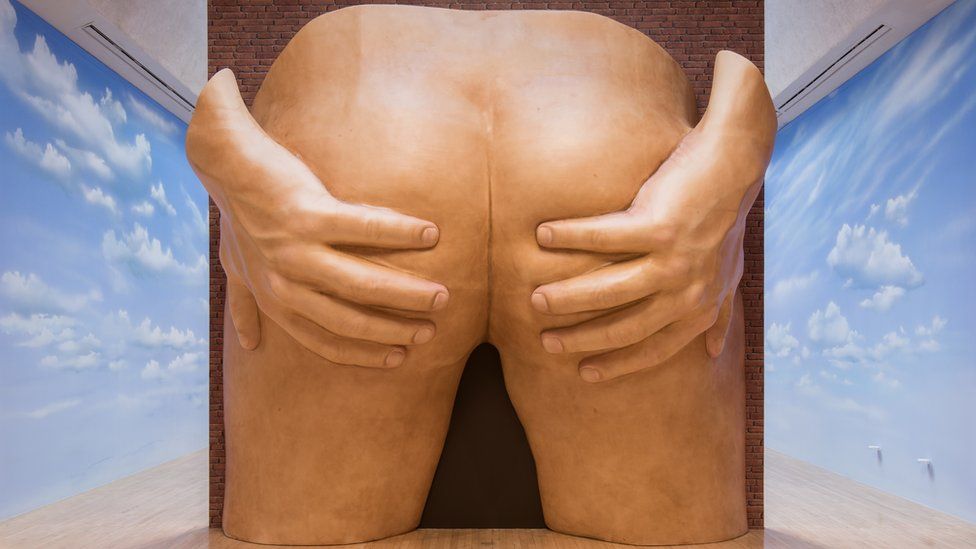Turner Prize exhibition opens with giant buttocks, brick suit and a train
- Published

Members of the public have their first chance to see the artwork nominated for the Turner Prize when an exhibition featuring the four artists opens later.
Anthea Hamilton is nominated for work focusing on fetishism including an enormous sculpture of a man's buttocks.
Josephine Pryde's work features a train, while Michael Dean uses salvaged metal.
Helen Marten, who works in collage and screen-printing, is also in the running for the prestigious £25,000 prize.
BBC News broadcast a tour of the exhibition on Facebook Live on Monday with arts editor Will Gompertz.
Turner Prize exhibition: Will Gompertz's essential rundown
In a rare move, visitors will be able to take their own photos and video at the exhibition and share them via social media.
The aim of the prize is to "promote public debate around new developments in contemporary art".
Tate Britain in London is hosting the exhibition, which runs until January, with the winner to be named in December.
The prize is awarded to a British artist under the age of 50 who is considered to have put on the best exhibition of the last 12 months.
The winner will be announced in London on 5 December. Next year's prize will be given out in Hull when it is UK City of Culture.
Anthea Hamilton, who lives and works in London, is shortlisted for her Lichen! Libido! Chastity! exhibition at SculptureCenter, New York.
The Tate said her sculpture, installation, performance and video bring "a surrealist sensibility to popular culture" and "seduce the viewer with comic and unexpected combinations of images, materials and words".
Michael Dean, from Newcastle, is nominated for sculptures and installations made from "aesthetically-overlooked materials" like salvaged corrugated metal from a shop shutter.
The Tate said his work, seen at South London Gallery and de Appel arts centre in Amsterdam, is "concerned with the physical presentation of language".
Helen Marten creates sculpture, screen printing and writing featuring the "collage-like accumulation" of "models and motifs taken from contemporary visual culture".
The Tate said she "creates poetic, pictorial puzzles" drawing on "gestures and imagery of our everyday lives".
From Macclesfield, Cheshire, she is nominated for her presentations at the 56th Venice Biennale and Greene Naftali in New York.
Josephine Pryde's work, meanwhile, focuses on the meeting point between art and photography.
Tate said it examined the idea of "art as commodity and of the seductive qualities of the wider art world", adding that she "calls into question the conventions of the gallery".
The artist, from Alnwick, Northumberland, is nominated for her solo exhibition Lapses in Thinking by the Person I am at CCA Wattis in San Francisco.
One of her pieces in that exhibition was Lapses in Thinking, a model of a Union Pacific freight locomotive pulling two box carriages which visitors could sit on and ride around the gallery.
The Tate exhibition includes New Media Express (Baby Wants to Ride), a different train artwork which is stationary.
The Turner Prize exhibition will be at Tate Britain from 27 September until 8 January 2017.
Follow us on Twitter @BBCNewsEnts, on Instagram, or if you have a story suggestion email entertainment.news@bbc.co.uk.
- Published12 May 2016
- Published12 May 2016